Sourdough Oatmeal Bread
Sourdough Oatmeal Bread! With a hint of honey, hearty oatmeal flavor and great sourdough texture, this sandwich bread tastes fantastic and will keep fresh for several days.
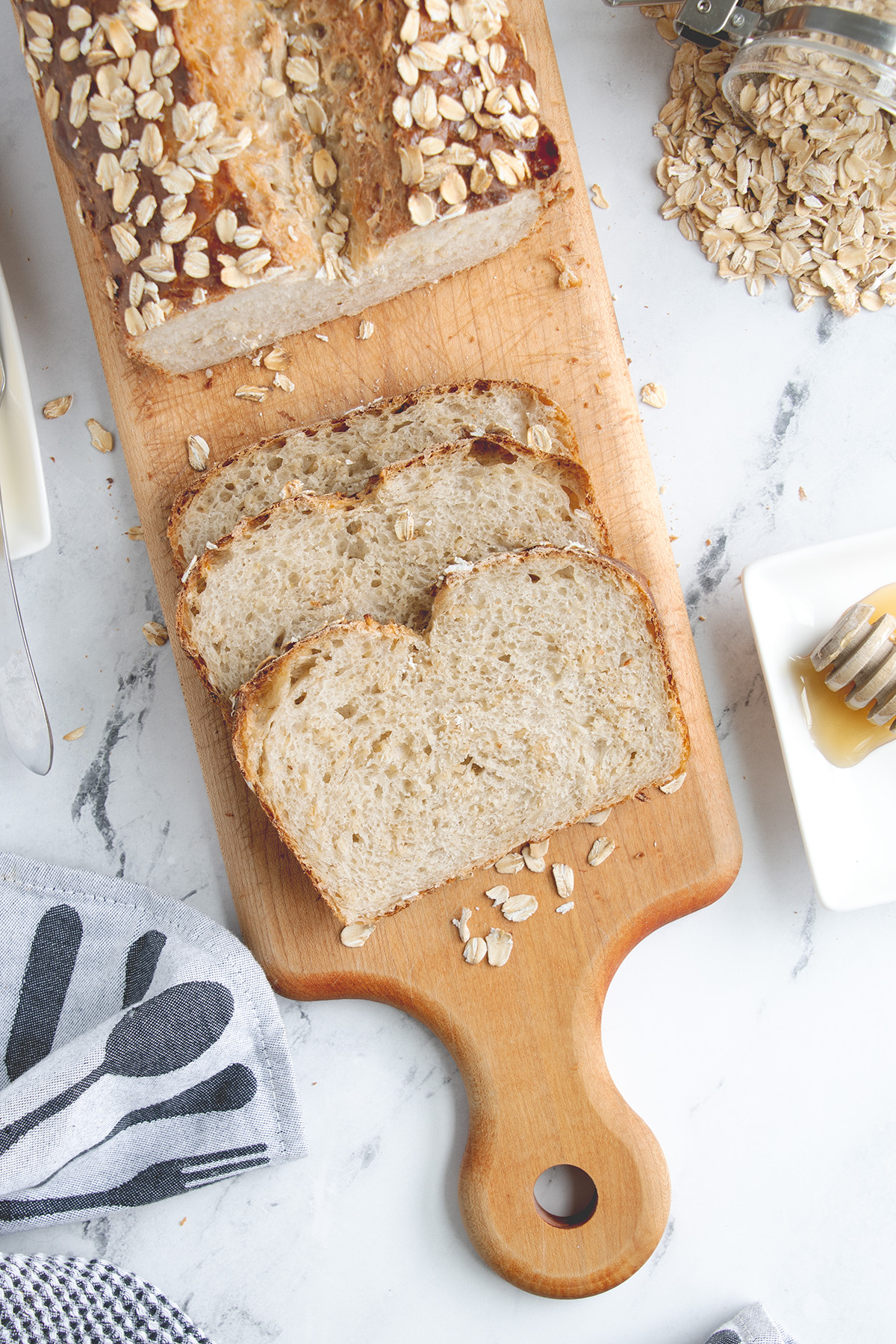
We all love a great loaf of Artisan Sourdough Bread. But sourdough bread can go way beyond those iconic rustic, crusty loaves.
Sourdough starter also does wonderful things for the taste and texture of soft sandwich breads.
I like sandwich bread with an small, consistent crumb to keep all the filling in. I also like a sandwich bread to have a softer crumb and crust.
This Sourdough Oatmeal bread delivers all those great sandwich bread characteristics. You’ll find links for more sourdough sandwich loaves at the end of the post.
Ingredients
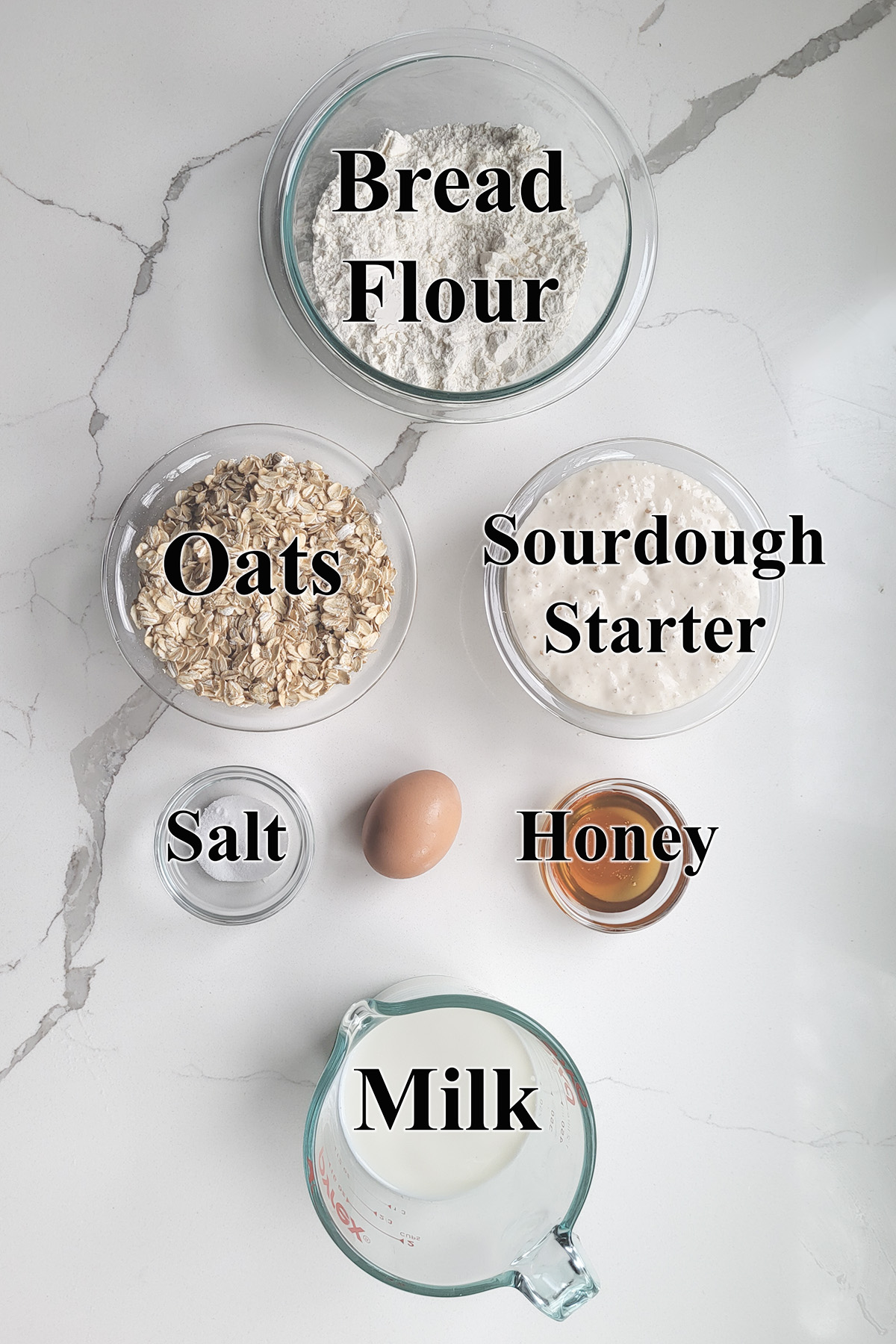
Ingredient Notes
- Sourdough Starter – This recipe was developed using a 100% hydration starter. If your starter has a different hydration you may need to adjust the amount of flour in the recipe.
- Bread Flour – Oats don’t develop gluten to support the bread structure. High protein bread flour gives the dough structure so it can rise in the oven.
- Rolled Oats – Use old fashioned rolled oats. They are thicker than quick oats which gives the bread a hearty texture. In a pinch you can use quick oats.
- Honey – Adds wonderful flavor, enhances browning and makes the crumb soft and slightly sweet.
Process Photos
See the recipe card for detailed measurements and instructions.
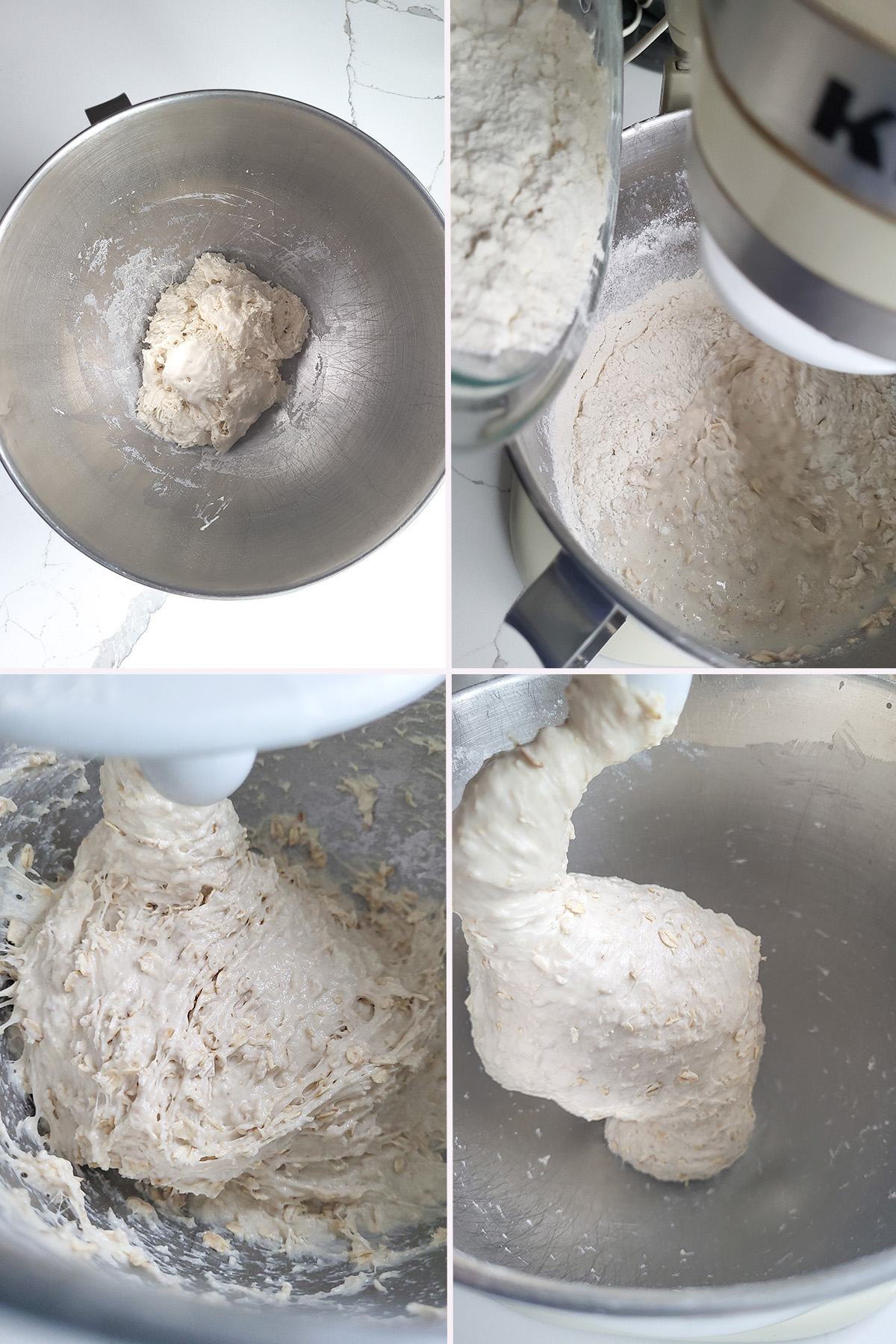
- Combine the starter with some of the bread flour and set it aside for 30-60 minutes. This will kick-start the gluten development.
- Add the milk and oats. Then add the remaining bread flour.
- The dough will start out quite sticky.
- After 5 minutes of kneading the dough should gather on the hook and clear the sides of the bowl.
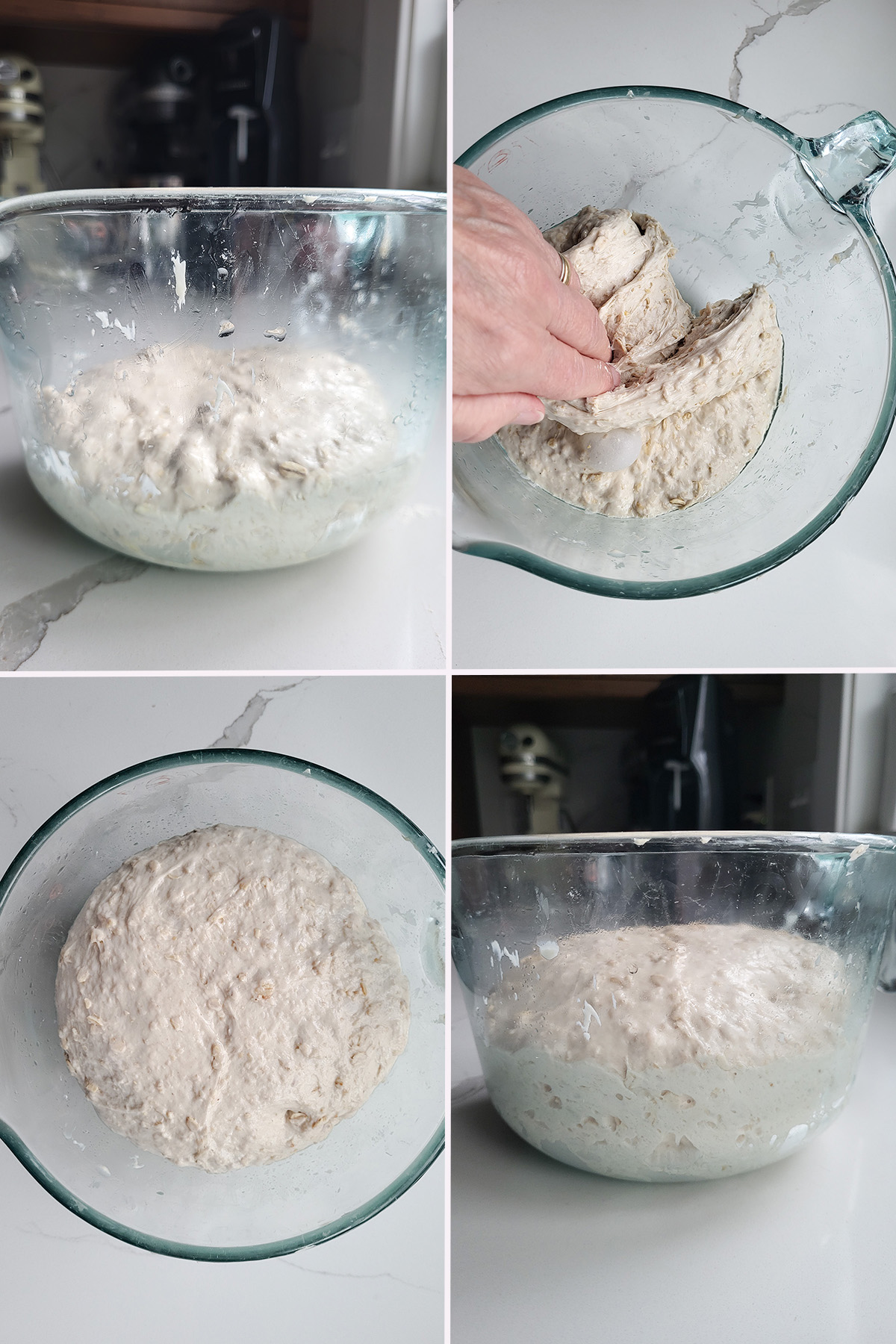
- Set the dough aside at room temperature for the initial fermentation.
- Every hour fold the dough to redistribute the yeast.
- After 3-5 hours the dough should be lively, elastic and aerated. Put the dough in the refrigerator at this point. If you want to bake the same day you can go ahead with forming the loaf.
- Remove the bowl from the refrigerator and turn the dough out onto a lightly floured surface.
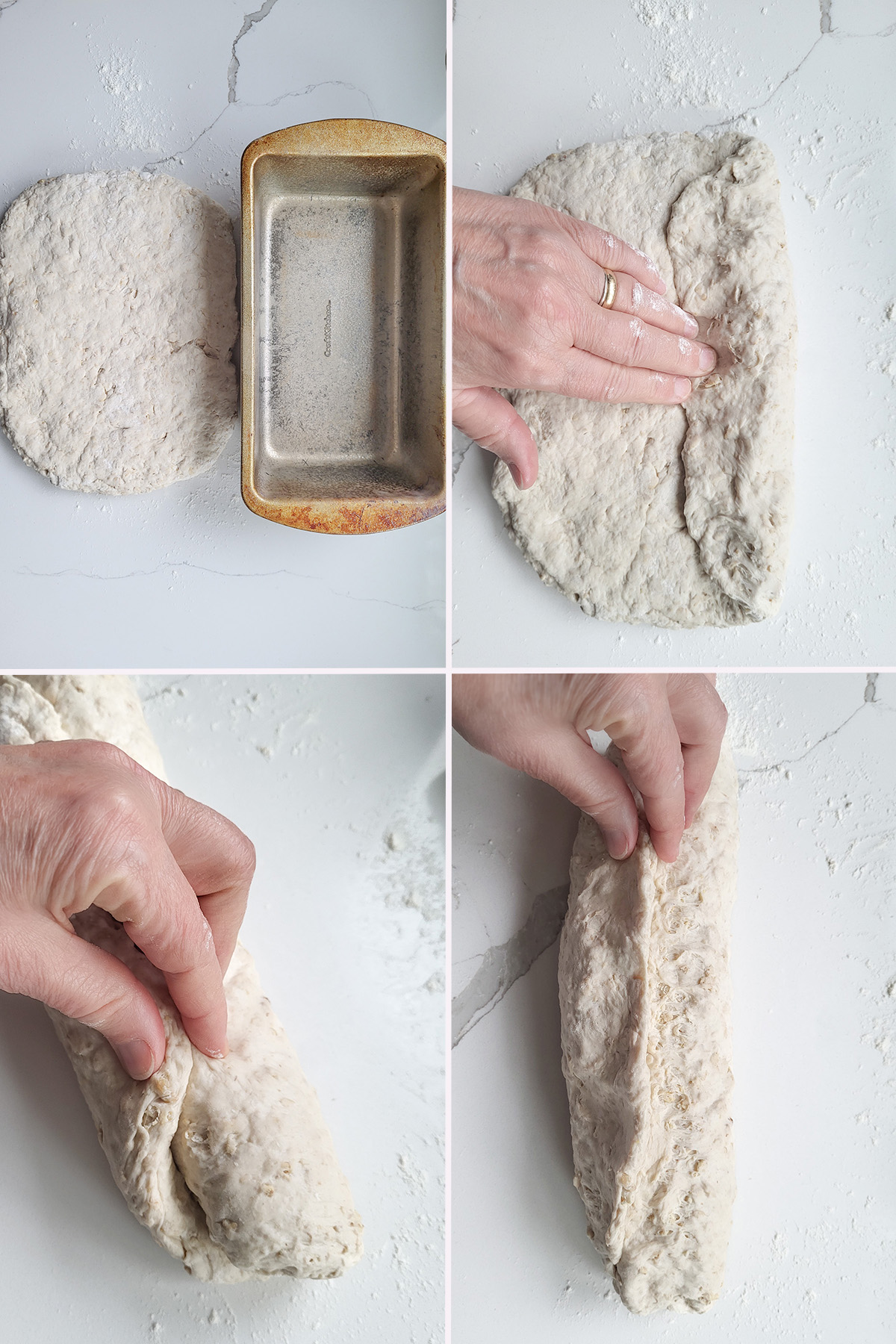
- Pat the dough to a rectangle the same length as the loaf pan.
- Roll the dough from the long side.
- Pinch the seam closed.
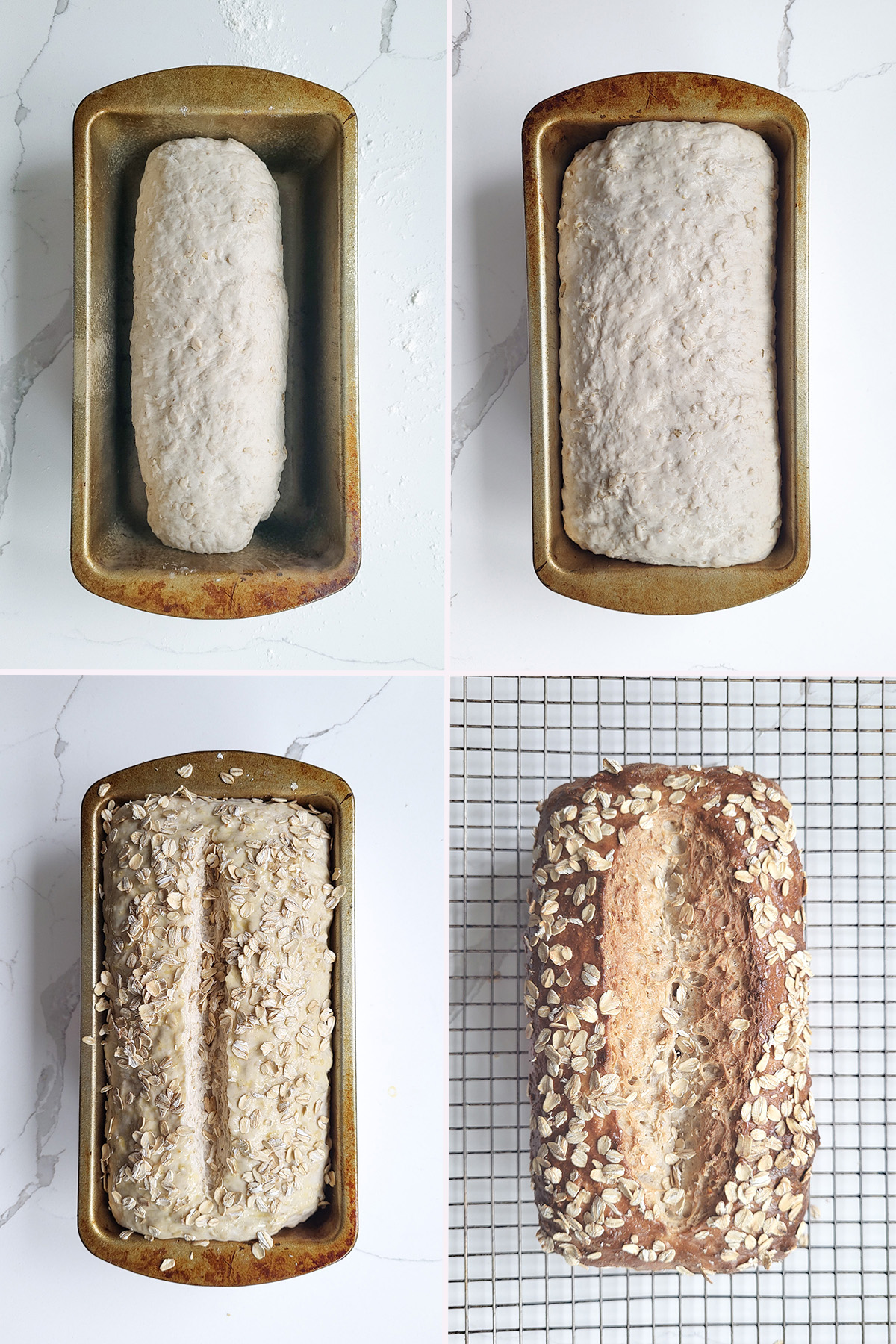
- Place the dough into the pan, cover it and set it aside to rise.
- The dough should double in volume and fill the pan.
- Cut a slash down the center of the loaf. Brush with egg wash and sprinkle with oats.
- Bake until the interior temperature of the loaf is 200F.
Baking Timeline
- If your starter needs feeding, do that the night before or early in the morning of the day you want to make the dough.
- When the starter is at its peak, mix the dough. Allow it to ferment at room temperature 3-5 hours then put it in the refrigerator. The dough can stay in the refrigerator for 2-3 days at this point.
- Take the dough out of the refrigerator and immediately and shape the loaf. Leave it to rise at room temperature for 2-3 hours. The exact rising time will vary based on the temperature of the dough and the ambient temperature.
- If you want to bake the same day, feed the starter the night before. Make the dough in the morning and leave it to ferment until the afternoon. Form the loaf and leave it to rise, skipping the refrigeration step.
Storage
- Sourdough Oatmeal Bread is at its very best the day it is baked.
- Thanks to the sourdough starter, milk and honey, the bread will stay fresh at room temperature for 2-3 days.
- Never refrigerate sourdough bread. If you won’t use it within a couple of days then put it in the freezer.
- The bread can be frozen as a whole loaf or pre-sliced.
- Previously frozen slices can be toasted. A loaf can be defrosted then warmed in a 200F oven to revive the texture.
More Sourdough Sandwich Bread Recipes
- Sourdough White Sandwich Bread
- Sourdough Whole Wheat Sandwich Bread
- Sourdough Multigrain Bread
- Sourdough Rye Bread
- Sourdough Marble Rye Bread
- Sourdough Hoagie Rolls
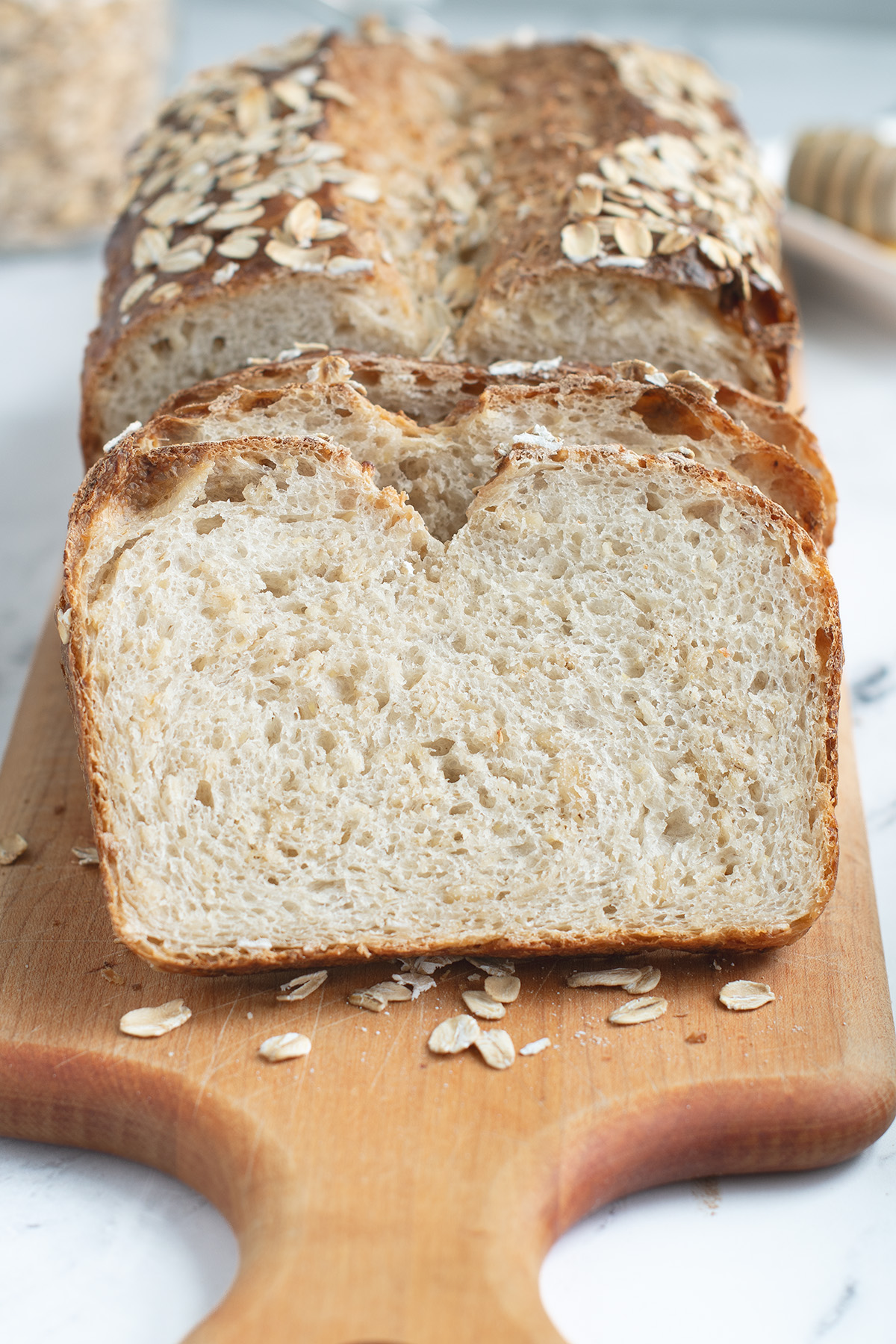
If you love this recipe as much as I do, I’d really appreciate a 5-star review.
Sourdough Oatmeal Bread
Ingredients
- 8 oz active sourdough starter (1 cup)
- 8 ¾ oz bread flour (1 ¾ cups, see note)
- 8 oz whole milk (1 cup)
- 1 ½ oz honey (2 tablespoons)
- 1 ½ teaspoons table salt
- 5 oz old fashioned rolled oats (1 ½ cups)
- 1 egg (for egg wash)
Instructions
- In the bowl of a stand mixer or a large mixing bowl combine 8 oz active sourdough starter, and 1/2 cup (2 1/2 oz) of the bread flour. Cover the bowl and allow the sponge to rise for 30-60 minutes.
- Scald 8 oz whole milk in the microwave. Stir 1 ½ oz honey and 1 ½ teaspoons table salt into the milk then set it aside to cool to about 100°F (a little warmer than body temp). Add the cooled milk to the sponge in the mixing bowl. Add 5 oz old fashioned rolled oats. If using a stand mixer, switch to the dough hook.
- With the mixer running, add the remaining bread flour. Knead the dough for 4-5 minutes until the dough gathers on the hook and clears the sides of the bowl. If mixing by hand, add as much of the flour by hand as you can then finish kneading in the remaining flour. Turn the dough out onto a lightly floured surface and knead into a smooth ball.
- Place the dough into an oiled bowl, turning once to coat. Cover and set at room temperature for 1 hour. After an hour, with the dough still in the bowl use your hand to lift the top edge of the dough over into the middle of the dough. Repeat with the other 3 sides then flip the dough over. Cover and set at room temperature for another hour. Repeat the folding procedure 2 more times so the dough ferments for a total of 3 hours. By now the dough should be lively, elastic and airy. If the dough is still sluggish give it another hour or two at room temperature. After the initial fermentation the dough can be refrigerated for up to 2 days, or you can go ahead and shape and bake the loaf the same day.
- Grease a 9"x 5" loaf pan with a light film of vegetable oil or cooking spray.
- Turn the dough out onto a floured surface. Without kneading, pat the dough to a 9"x5" rectangle. Tightly roll the dough from the long side to form a log. Pinch the ends of the dough to seal.
- Set the dough into the pan, seam side down. Cover with plastic wrap and set in a warm place and rise until the dough is almost doubled in size and fills the pan, about 1-1½ hours. If your dough is cold from the refrigerator the rising time may be longer. In the meantime, preheat the oven to 350 °F.
- Use a sharp knife or razor to cut a ½" deep slash down the center of the loaf. Brush the dough with egg wash and sprinkle with rolled oats.
- Bake about 40 minutes until golden brown and the interior temp is 200°F.
- Cool in the pan for 5 minutes before turning out onto a cooling rack. Cool to room temperature before slicing.
As an Amazon Associate and member of other affiliate programs, I earn from qualifying purchases.

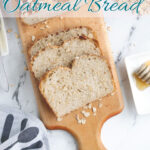
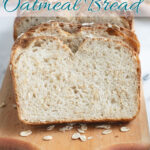
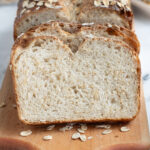




If 60g whole grain flour (30g Rye & 30g Wheat) is used in place of 60g bread flour, do any additional adjustments need to be made to accommodate the whole grain flours?
For add-ins, I’m thinking to use 1/2 TBL millet seeds and 1/2 TBL sesame seeds.
I think 60g (about 2oz) of whole grain replacing some of the bread flour should be fine. It’s a small enough amount that there should be plenty of gluten from the bread flour. I do have a recipe for Sourdough Multigrain Bread that might be what you’re looking for.